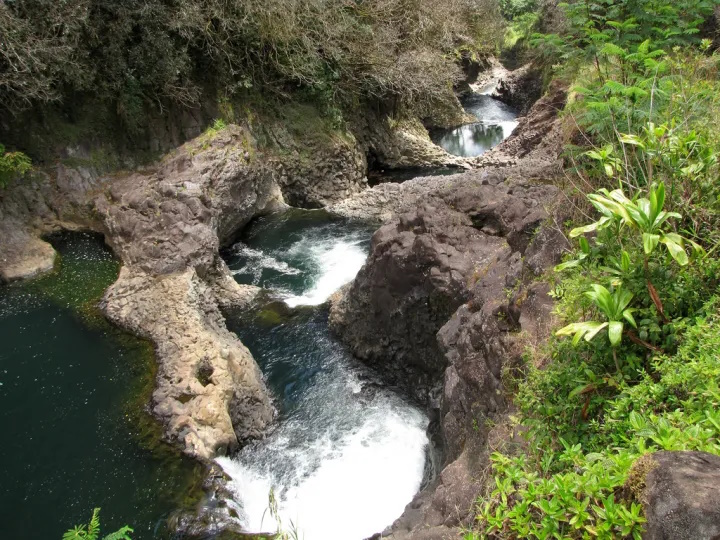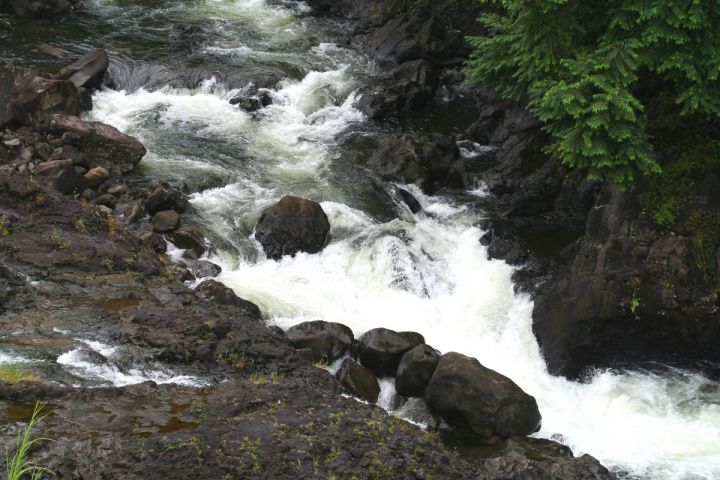The early Polynesian settlers to Hawaiʻi brought sugar cane with them and demonstrated that it could be grown successfully in the islands.
Fast forward … Hawai‘i’s economy turned toward sugar in the decades between 1860 and 1880; these twenty years were pivotal in building the plantation system.
Sugar‐cane farming gained this prestige without great difficulty because sugar cane soon proved to be the only available crop that could be grown profitably under the severe conditions imposed upon plants grown on the lands which were available for cultivation. (HSPA 1947)
In 1876, the legislature of Kamehameha III passed a law declaring all “forest lands” to be government property in an effort to conserve the forests from further encroachment on the seaward side by the plantations’ need for fuel and on the mountain side from grazing animals.
Founded in 1895, the Hawaiian Sugar Planters’ Association (HSPA), dedicated to improving the sugar industry in Hawai‘i, has become an internationally recognized research center. (It was in 1996 when HSPA expanded its research interest besides sugarcane and acquired its current name Hawai‘i Agriculture Research Center (HARC), expanding its research on tropical crops and forests.)
Interestingly, it was the sugar growers, significant users of Hawai‘i’s water resources, who led the forest reserve protection movement. On May 13, 1903, the Territory of Hawaiʻi, with the backing of the Hawaiʻi Sugar Planters’ Association, established the Board of Commissioners of Agriculture and Forestry. (HDOA)
The Forest Reserves were established as a cooperative arrangement between the Hawaiʻi Sugar Planters Association and the territorial government.
Plantations needed wood for fuel, but they also needed to keep the forests intact to draw mist precipitation from the trade winds, which in turn fed the irrigation systems in the cane fields below.
Their own consumption of fuel had clearly been contributing to the decline of the forest at lower elevations, where flume systems transported large quantities of wood, as well as cane. (Mills)
The link between tree-planting and the sugar planters can be seen particularly clearly in the career of Harold Lyon, who arrived in Hawai‘i in 1907 as a plant pathologist in the employ of the Hawaiian Sugar Planters’ Association (HSPA).
Lyon was a strong voice for forests; neglect of the islands’ forests would be “suicidal,” for ‘‘everything fails with the failure of our water supply’’.
Johnny Ah San, who worked as a territorial forester, noted, “And then HSPA had a man down at Nāuhi Nursery, and they planted trees. Then before the war [WWII], Roosevelt had the WPA [Works Progress Administration], so the men planted trees in the forest.” (Johnny Ah San; Maly)
The Nāuhi (‘the yams’) facility was interchangeably referred to as a Nursery and Experimental Station (and, apparently, also called Nāuhi Camp). The Hilo Forest Reserve was the site of cooperative reforestation efforts by the HSPA and Territorial foresters and later by the Civilian Conservation Corps under the direction of the Bureau of Forestry.
Over 100 varieties of temperate trees and plants were tested at the Experiment Station at Nāuhi; many of which succeeded to the point of naturally reproducing.
Nāuhi Cabin (a small building with three out-structures) was part of the Nāuhi Gulch Experiment Station, which was established in 1924. It is located in the ahupua‘a of Honohina at about 5,100 feet above sea level. A nursery that was part of the Experiment Station is no longer standing. (Tuggle)
The purpose of Nāuhi Gulch Experiment Station, which operated until the beginning of World War II, was to “introduce, propagate and plant out in the adjacent forest lands various species and varieties of temperate zone, both northern and southern, trees and other plants”.
To this end, over 78 varieties of fruit trees and over 30 varieties of other temperate zone trees and plants were tested. Surrounding the cabin now is a wild landscape of feral garden flowers like roses, daisies, and nasturtiums, as well as apple, pear, and plum trees.
In 1941, wild pigs in the Nāuhi gulch-Pihā area were noted by Lyon: “Of special interest to us at this time are your remarks regarding the prevalence of wild hogs in the Nāuhi Gulch-Pihā region. They undoubtedly do a great deal of damage there.”
“If, for any reason, this Territory is compelled to produce its own food supply, we could organize a campaign which would remove most of these hogs from the forest and, at the same time, yield a goodly amount of excellent food for our people.” (Tuggle)
The cabin was part of a complex that included several buildings and an orchard on 47 acres of land leased from Lili‘uokalani Trust. In 1945, Territorial forester Bryan reported on the conditions at the by-then abandoned station (Bryan 1945):
“There has been no work done at this station for a considerable period of time, and it is in a run-down state at the present time. Fences are in need of repairs, wild pigs are numerous and have done some damages in the orchard, and it will require considerable labor and effort to bring it back to its former appearance.”
Nāuhi Cabin has been used by the National Biological Survey. Formed in 1993, their mission was to gather, analyze, and disseminate the biological information necessary for the sound stewardship of natural resources and to foster understanding of biological systems and the benefits they provide to society. It is now known as USGS’s Biological Resource Division (BRD).




































